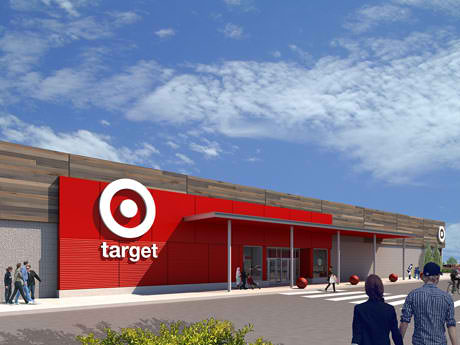
Watch out, Amazon.com (AMZN, +0.94%) and Walmart (WMT, -1.04%), Target (TGT, -4.46%) is getting its e-commerce act together.
Fresh off a strong holiday season fueled in large part by big strides it has made in digital sales, Target announced a series of new initiatives on Tuesday that won’t quite help it leapfrog its two rivals tech-wise or even come close sales wise, but should at least keep it in the game and help it protect its market share.
Target, which reported a 29% jump in online sales on Tuesday, told Wall Street later in the day at its annual analyst day in its hometown of Minneapolis, that it has started to offer free two-day shipping to customers either ordering a minimum of $35 worth of goods or at least paying for the order with a store card. Like Walmart, Target won’t require membership in a plan for the service like Amazon does with its $99 annual Prime memberships. The initiative is part of Target’s multi-year $7 billion plan announced last year that aimed to fully integrate stores and e-commerce and use its 1,800 stores to speed up delivery. And it allows Target to offer a service increasingly seen as a basic minimum.
Much like Walmart, Target sees its fleet of stores—the vast majority of Americans live within 10 miles of a Target—as a key advantage over Amazon, even as that company starts to use its Whole Foods Market stores to narrow that gap. (Amazon on Tuesday added Atlanta and San Francisco to the list of six cities where it will offer two-hour Whole Foods delivery).
Some 50% of Target’s online orders during the holiday quarter were filled by a store and operations chief John Mulligan told analysts that shipping from a store was much cheaper than from a dedicated fulfillment center and that it was cost efficient to retool parts of the stores, with a big ramp up during the holidays, compared to open large new centers..
In the last year, Target has bought logistics companies Shipt and Grand Junction to accelerate the rollout of same-day deliveries for a flat fee, which Target has been testing in Manhattan and will expand to other parts of New York City as well as Boston, Chicago, San Francisco, and Washington this year. And after a 50-store test, the chain will offer curbside pickup service to some 1,000 stores by year end. (Walmart has its own curbside pickup service, expected to be at 2,000 stores, as does sister chain Sam’s Club.)
Add to that Target’s pledge to raise its internal minimum wage to $15 by 2020 (it’ll be $12 this spring), and the ramping up f store remodels this year to 300 locations, and you have enormous pressure on Target’s margins, a big reason the company’s shares fell about 6% during the executives presentations. Bloomberg News pointed out Target reported its weakest holiday quarter gross profit margins in 20 years.
But the company sees little choice in making those investments to keep its new momentum going.
“We’re making Target America’s easiest place to shop,” Target CEO Brian Cornell told analysts at the conference, which was web cast.
Without a grocery business anywhere near as big as Walmart’s to guarantee a steady stream of regular customer visits, Target is redoubling efforts to make its stores inviting. At some stores it is renovating it is installing more prominent areas for the retrieval of online orders, a “trend spot” near the entrance of the store to highlight more exciting wares, more checkout lanes and new flooring and lighting. (Last week Macy’s (M, +0.07%) announced similar moves showing that retailer now grasp the paradoxical importance of their stores in the Amazon era.)
Target has also leaned on its knack for creating popular stores brands to get people into store, launching a bunch of new brands last year that are spurring shopper visits. But the discount retailer can’t rest on its laurels, what with Walmart launching its own new and frankly improved apparel brands, and Amazon reaching deeper into its competitors’ territory with its own fashion push.
As for the concerns about all these efforts, from e-commerce to store improvements, taking a toll on Target’s profit, people taking the long view understand that is necessary. As Neil Saunders, Neil Saunders, Managing Director of GlobalData Retail, puts it: “If it is to grow, Target needs to invest – including in customer service, which affects wages.” It’s either that, or a return to the sluggish quarterly results Target was posting not so long ago.
























